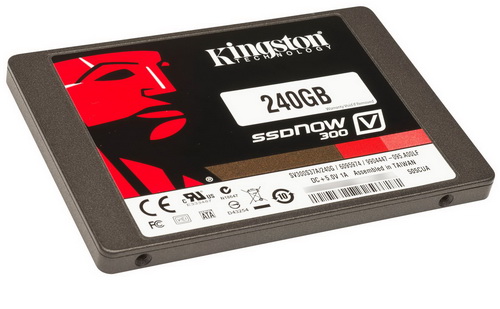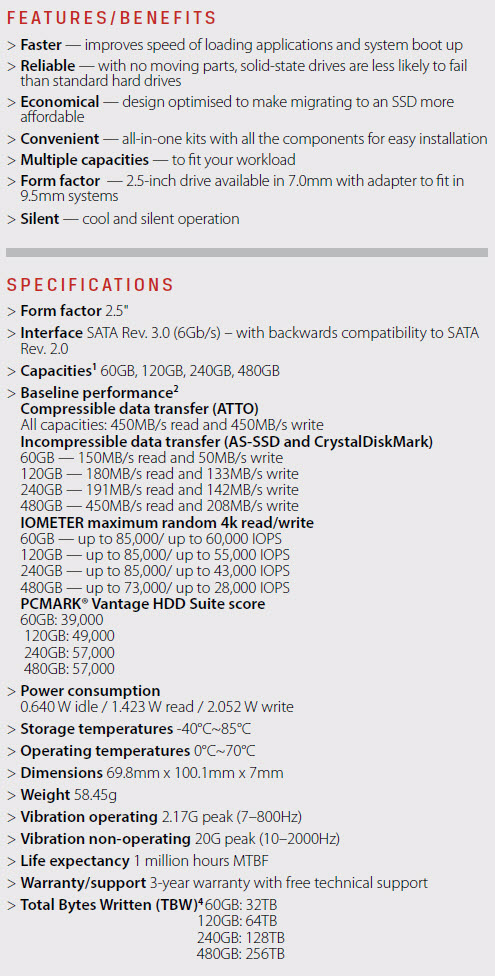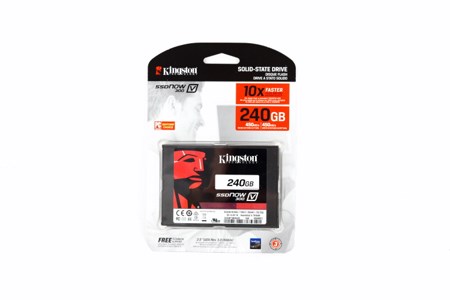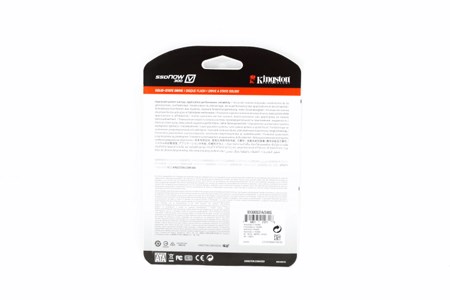INTRODUCTION

2016 is almost here and i still remember the time 7-8 years ago when the very first commercial solid state drives (SSDs) made their appearance in the market and gave everyone a glimpse into the future of computers. Today i don't know if things changed as much as we had all hoped back then especially since mechanical disk drives are still the dominant storage media in the market but noone can deny that things have changed for the best. For example where a few years back one would have to update the CPU and RAM of a system to improve its responsiveness now people need just an SSD. However not all has been good in this industry since i bet many of you may still remember some cases where certain manufacturers were accused of using the old "bait and switch" marketing trick with their SSD models. Among those was Kingston and they were accused of replacing the 19nm NAND flash modules found in their first batches of the SSDNow V300 SSD line with lower-performance 20nm asynchronous ones. We did test one of the early V300 models (120GB) back then but since i always heard about this bait and switch trick i decided to take a look at one current SSDnow V300 model to see if what I’ve been hearing for roughly 3 years now is true.
Kingston Technology Company, Inc. is the world’s largest independent manufacturer of memory products. Kingston designs, manufactures and distributes memory products for desktops, laptops, servers, printers, and Flash memory products for PDAs, mobile phones, digital cameras, and MP3 players. Through its global network of subsidiaries and affiliates, Kingston has manufacturing facilities in California, Taiwan, China and sales representatives in the United States, Canada, Europe, Russia, Turkey, Ukraine, Australia, New Zealand, India, Taiwan, China, and Latin America.
Under the hood of the SSDnow V300 now se see pretty much the same components like we did almost 3 years ago such as the SandForce SF-2281 controller by LSI which offers several features including TRIM, intelligent garbage collection, RAISE (error correction, RAID like protection and recovery), DuraClass (advanced wear leveling and monitoring algorithms) and DuraWrite (up to 20x or more the flash endurance compared to other similar generation controllers). However instead of the 19nm Toggle NAND flash memory modules by Toshiba Kingston used back then this time over it has 20nm MLC NAND flash memory modules by Micron a change which at least to what I’ve been reading is responsible for considerably reduced read/write performance. Do keep in mind that although back in January 2013 we reviewed the 120GB V300 model and so the 240GB model should have slightly better read/write performance if what is said stands then even with that small "boost" it should still underperform compared to its smaller capacity brother.
SPECIFICATIONS AND FEATURES

PACKAGING AND CONTENTS
This time over we received the standalone package (in 2013 we got the upgrade bundle version) which has the SSD behind clear plastic.
Warranty information is printed at the rear of the box in many languages.
The standalone version comes with just the V300 240GB and a 7mm to 9.5mm bracket.
THE SSDNOW V300 240GB
Appearance-wise the SSDnow V300 240GB by Kingston is identical to the 120GB version and just like with every other SSDnow model in the market the sticker at the top contains its serial number, barcode, electrical specifications, country of assembly, firmware version and several certification and warning logos.
Again nothing on the other side (all 4 screws are located beneath the top sticker).
The typical SATA data and power connectors are placed at the rear of the drive.
8 NAND flash modules are placed on the top side of the PCB (unfortunately Kingston has their logo and part number on them so we don't know anything about them) each with a capacity of 16GB.
Another 8 NAND flash modules are placed on the other side of the PCB right next to the SandForce SF-2281 controller.
For the record our sample arrived with firmware version 605ABBF2 installed.
TEST BED


TESTING METHODOLOGY
After roughly 8 years of testing sold state drives i have concluded that it's almost impossible for any single benchmark suite to accurately measure their performance and that's why in certain benchmark suites we see amazing read/write performance numbers with some drives while in others things are quite different. The reason behind this is that some benchmarking suites are configured to read and write random chunks of data while others read and write constant (sequential) ones. So that's why i always use a very wide selection of benchmarking suites including AIDA64, HD Tach RW, HD Tune Pro, Crystal Disk Mark, Sisoftware Sandra Pro, AS SSD, IOmeter and ATTO. To get the most accurate results each test gets repeated a total of 6 times with the average performance numbers recorded into our charts. Also as of February 25th 2015 our results will also include the Storage Networking Industry Association’s (SNIA) IOMeter tests. These tests include a 12 Hour write test used to “simulate” performance degradation over time and a mixed workload test which basically shows what you can expect when using an SSD continuously for roughly two hours. Unfortunately due to the time required for these tests we repeat them a total of 3 times and not 6 as the above.
Many people have made inquiries about our charts in the past so once again please do keep in mind that the Charts have the average performance numbers of each drive recorded and not the peak (highest) ones. Also although every single one of these programs can help potential buyers choose the right drive for their needs you should also remember that from any kind of benchmark up to real world usage the gap is not small (and usually most differences will go unnoticed by most people). All tests were performed in a fresh Windows 7 Ultimate x64 installation with every update installed up to December 21st 2015.
TEST RESULTS - AIDA64 / ATTO


TEST RESULTS - HD TACH RW / HD TUNE PRO


TEST RESULTS - SISOFTWARE SANDRA PRO / CRYSTAL DISK MARK X64


TEST RESULTS – AS SSD / IOMETER
TEST RESULTS – IOMETER SNIA



CONCLUSION

I can’t speak on behalf of all of you out there but I really hate it when people try to trick me and the same of course applies to manufacturers. So when a few months back I remembered the V300 “fiasco” I just had to make sure that our sample was not “cherry picked” and thus better compared to what you all could get after that. Unfortunately I was able to secure a 240GB sample so a direct comparison with the 120GB one we got back in 2013 is obviously not possible. Still it’s quite clear that at least the 240GB model surpasses the 120GB In almost every test and in some like IOmeter by a very long distance. Because of that I feel that Kingston either performed some firmware tweaks to achieve these read/write numbers or the 240GB model still uses Synchronous NAND flash modules (something which we can’t see because of the Kingston branding on them) so the “bait and switch” trick doesn’t really apply here, at least not in terms of performance (in the end however it’s always up to you to believe what you will). With that out of the way even 3 years later the SSDnow V300 240GB can still compete with the latest consumer oriented SSDs and that’s more than what I was expecting.
The SSDnow V300 240GB by Kingston is currently available in 3 different versions, standalone (the one we got), desktop bundle kit and notebook bundle kit. The first retails for just USD77.70 inside the USA (Amazon.com) and for 77Euros inside the EU (Amazon.co.uk) while both kits retail for roughly 20% more. Overall the SSDnow V300 240GB still performs very well, offers a TBW of 128 with a MTBF of 1 million hours and is priced fairly and so for all of the above it gets our Golden Award.
 PROS
PROS
- Build Quality (SF-2281)
- Very Good Performance (Especially For A 3 Year Old Model)
- 128TBW / 1 Million Hours MTBF
- 3 Year Warranty With Free Technical Support
- Available Bundles (Notebook/Desktop Kits)
- Price (For Some)
CONS
- 3 Years in The Market / NAND Flash Performance “Issue” (not encountered in our tests)

 O-Sense
O-Sense




















.png)

